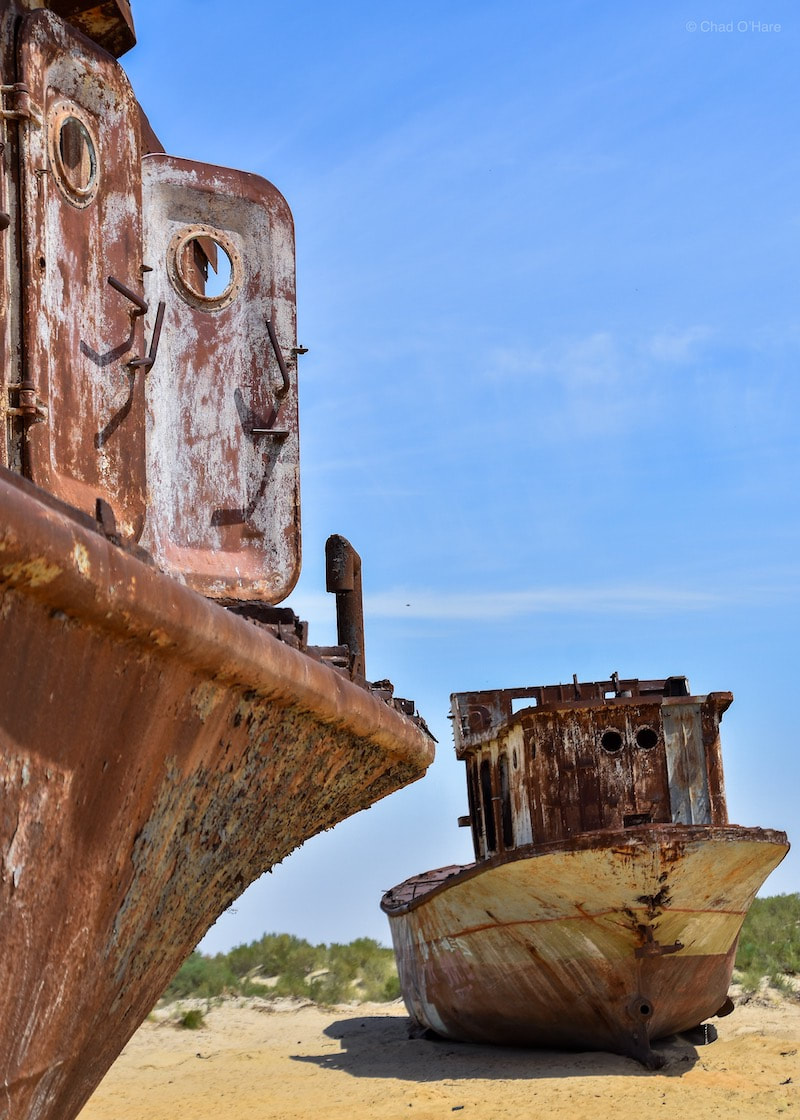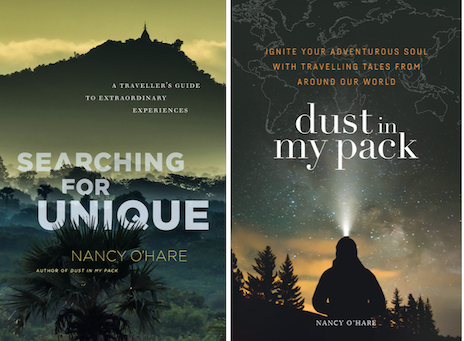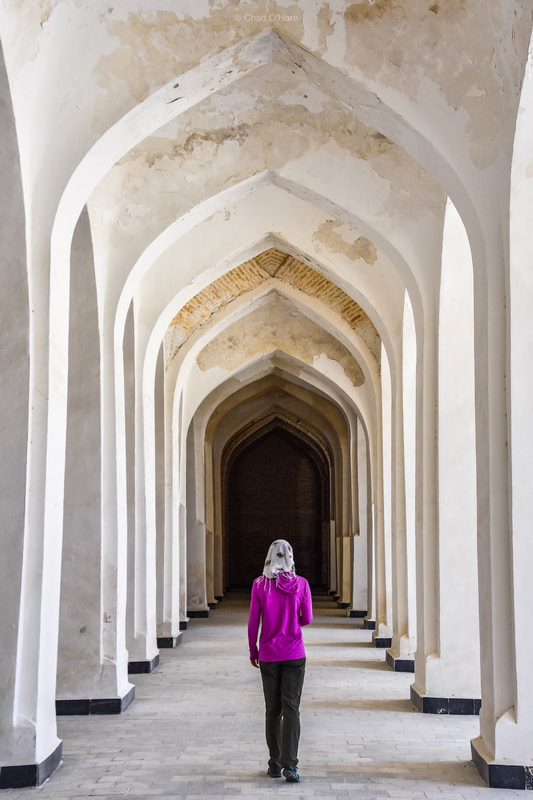|
Written in dedication to World Oceans Day after visiting this sea-turned-to-desert from its Uzbekistan shores in 2019. Thirty years ago, my eyes would have been blinded by the reflection from the Aral Sea’s waters. Today, they stared at sand and saxual bushes that merged into a hazy horizon no matter which direction I turned. Our Landcruiser had been bouncing along a four-wheel-drive track for nearly ninety minutes. We were driving on the seabed, or what remained of it. A rusted-out bus rested upside down and scorched at the side of the road near where we had left the Ustyrt Plateau and entered the Aral Sea’s former seabed. Since then, I had seen little else beyond the occasional gas rig or pipeline marker - the latest business of choice in a fishing region erased of its sea. The Aral Sea used to be the fourth-largest saline lake in the world. Today, ten percent of its water remains. What happened can be explained by man’s decisions. Essentially, humans manipulated the environment for their own benefit, destroying an ecosystem and a fishing industry in the process. In the 1960s, the Soviet government decided to divert the two rivers that fed the Aral Sea—the Amu Darya from the south and the Syr Darya in the north. Water went instead to irrigate agriculture, primarily cotton farming or was simply lost to desert seepage in the arid Central Asian Steppe. Within thirty years, the fishing industry was desiccated, birds had left and former islands became quiet desert towns. Today, steps are being taken to improve the livelihoods of those affected. In the former cannery town of Moynaq, a handful of guesthouses support a growing tourist interest. Most of the one hundred fishing vessels were sold, but the few remaining leave a stark impression of the once-booming fishing economy and a poignant vista before entering the town’s small museum. Construction projects and nearby natural gas drilling operations have started to offer more jobs than the region has seen for years. From a visitor’s perspective, the Aral Sea provides insight and appreciation into a startling environment. You can even try to swim—aka float—in its buoyant waters. Besides rusted boats and desert sands, you might be surprised at what else you can see in this remote part of Uzbekistan.
Images by Chad O’Hare Photography Travel Tips Where: The Aral Sea lies in Uzbekistan and Kazakhstan. I visited from the Uzbekistan side, starting from the city of Nukus in the autonomous region of Karakalpakstan. How to get there: Two or three-day tours through Besqala Tour Agency explore this region. Their tours include transport, guide, food, water, accommodation and a few other bits as described on their website. You can also ask to tailor the itinerary to suit your interest, such as early morning or evening site visits to maximize photography opportunities. Accommodation: Enjoy your own private yurt overlooking the remaining waters of the Aral Sea. The camp is owned and operated by Besqala. Weather: I visited in early June. During the day, temperatures rose to 40°C and cooled to below 20°C at night. Winters get cold and can reach -35°C. For more unique travel destinations, my books offer short narratives and travel tips to places around the world: Searching for Unique and Dust in My Pack.
1 Comment
|







 RSS Feed
RSS Feed